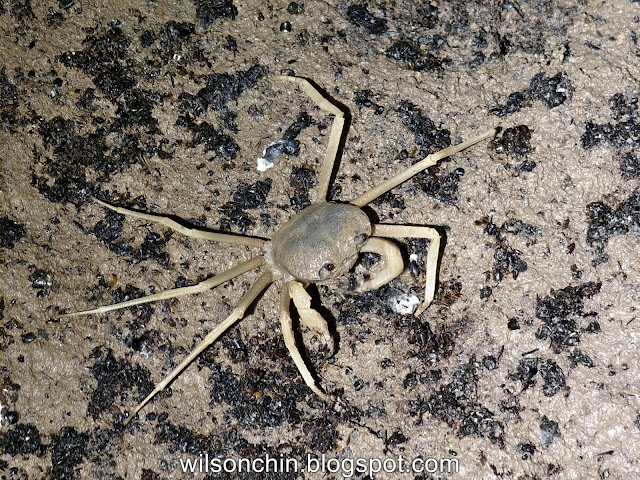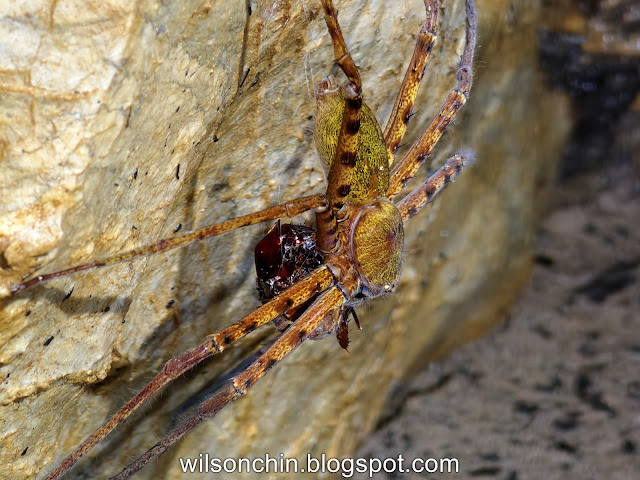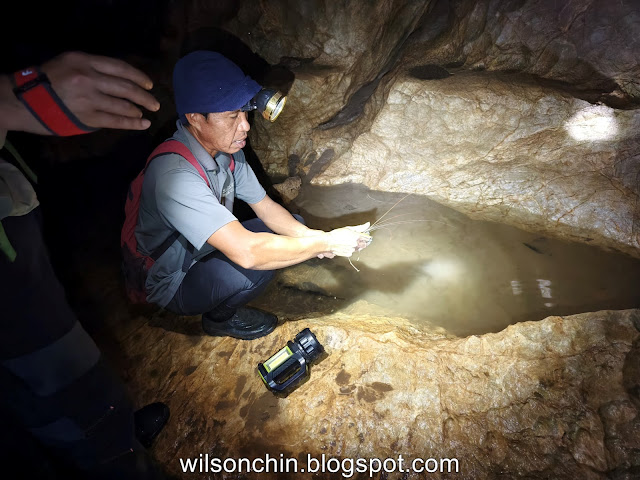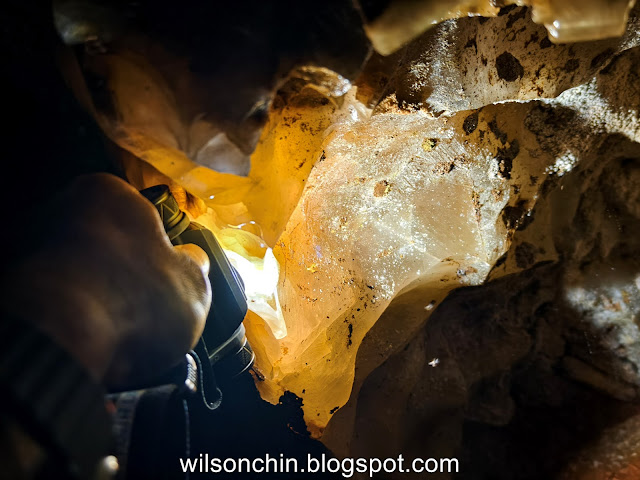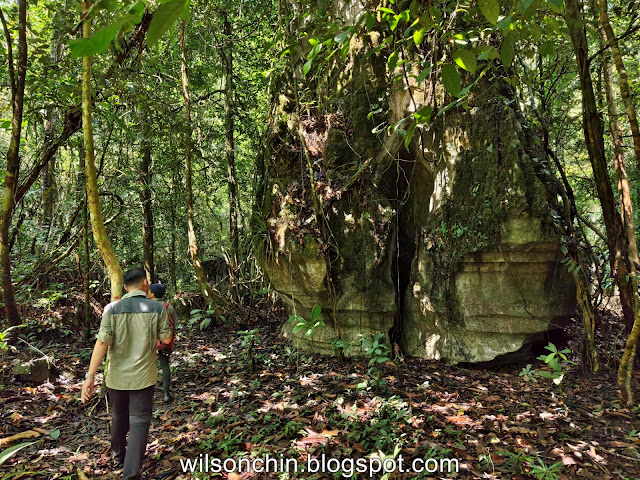Entrance to Gua Posih (Poshi Cave) at Merembeh Caving Park in Bau, Sarawak. Poshi Cave – known locally as Gua Posih – is a limestone cavern located near Kampung Merembeh in the Bau district of Kuching Division, Sarawak. It lies about 30–36 km from Kuching and is part of the limestone karst landscape of the Sarawak Delta Geopark. The cave is one of two major caverns (the other being Gua Kayu) in the Merembeh Caving Park, a community-managed eco-tourism site. Poshi Cave is noted for its impressive natural features and rich cultural history: it served as a refuge for local villagers in past eras and today contains remnants of that history. The site has become a key geotourism attraction, valued for both its geological significance and its indigenous heritage within the Sarawak Delta Geopark.
Historical Overview of Poshi Cave
Poshi Cave has a history deeply intertwined with the local Bidayuh community of Kampung Merembeh. During the colonial era, both Poshi and the nearby Gua Kayu were used as hiding places by villagers seeking refuge from external threats. Oral histories passed down in the community recount that ancestors sheltered in these caverns during times of turmoil, although specific events (such as warfare or unrest) are not fully documented in written records. The caves’ role as wartime or conflict-era sanctuaries has endowed them with a legendary status locally – they are said to hold “a thousand and one stories” of the villagers’ past struggles and resilience
Over time, explorers and locals have discovered artifacts and remnants within Poshi Cave that testify to its historical use. These historical artifacts (likely old tools, utensils, or other belongings left by those who took shelter) underscore the cave’s importance as a cultural time capsule. Unlike the famous Niah Caves or Gua Sireh in Sarawak, Poshi Cave is not widely known for prehistoric human remains or rock paintings; its significance is more in the realm of recent historical and community memory. The village of Merembeh itself was only established in the 1930s, which suggests Poshi Cave’s human use has been primarily within the last century or so, rather than in deep prehistory.
From the late 20th century onwards, Poshi Cave also became an economic resource for locals through swiftlet bird’s nest harvesting. Starting in the 1970s, Kampung Merembeh villagers have routinely collected the edible nests of swiftlets in Poshi Cave as a source of income. This practice, common in Bornean limestone caves, involves gathering hardened swiftlet saliva nests high on cave walls, prized in Chinese cuisine (bird’s nest soup). The continued harvesting activity indicates that the cave has been continuously frequented by the community for decades, blending traditional livelihood with conservation (as the harvesting is done seasonally and sustainably by locals).
In recent years, the historical and natural allure of Poshi Cave spurred a push for eco-tourism and exploration. Around 2019–2021, community leaders and the Sarawak authorities worked together to develop Merembeh Caving Park as a tourist destination. With a modest grant (approximately RM70,000) and gotong-royong (community collective effort), the villagers improved access to the cave, installed basic facilities, and began offering guided tours. By 2020, the site was officially launched under the management of Koperasi Kampung Merembeh (the village cooperative) and Tourism Malaysia, reflecting a formal recognition of Poshi Cave as a tourism product. Exploration of the cave by adventure tourists and local caving enthusiasts has revealed large chambers adorned with stalactites and other speleothems (mineral formations), highlighting the cave’s dramatic interior. Basic infrastructure such as solar-powered lighting has been added inside the cavern to facilitate safer visitation, without resorting to heavy development that could harm its natural state.
Poshi Cave within the Sarawak Delta Geopark
Poshi Cave is situated within the Sarawak Delta Geopark (SDGp), a 3,112 km² area that was recognized as Malaysia’s sixth national geopark in June 2022. The Sarawak Delta Geopark encompasses the Kuching–Bau region, including Bako National Park, Mount Santubong, and the Bau limestone karst zone. As part of this geopark, Poshi Cave contributes to the rich geological heritage that the SDGp aims to protect and promote. In fact, Sarawak authorities have identified the Bau Karst area – where Poshi Cave is located – as one of the key geosites for geotourism development. A state-supported geosite development project launched in 2023 focuses on mapping and enhancing three main locations: the Fossil Trail at Wind Cave (Gua Angin), Lubang Posih (Poshi Cave) at Merembeh, and the Paku Rock Maze Garden. This indicates that Poshi Cave is formally recognized as a geosite (or part of a geosite cluster) within the Sarawak Delta Geopark, alongside more famous caves like Wind and Fairy Cave.
Geologically, Poshi Cave is formed in the Bau Limestone Formation, an extensive carbonate rock formation that dates to the Late Jurassic–Early Cretaceous period (approximately 163 to 100 million years ago). During that time, the area was a shallow marine environment where calcium-carbonate sediments from coral reefs and marine organisms accumulated and eventually lithified into limestone. Over millions of years, tectonic uplift exposed these limestones, and acidic rainwater and groundwater slowly dissolved the rock along fractures – a process of karstification that created caves and tunnels. Poshi Cave is one of many caverns in the Bau karst landscape, which is characterized by jagged limestone hills, sinkholes, and underground streams. Notably, the region’s caves (including Wind Cave and others nearby) contain fossil shells and gastropods embedded in the limestone walls and ceilings, offering visible evidence of the area’s ancient marine origin. While specific fossil studies of Poshi Cave are not yet published, the same Bau Limestone outcrop is known to yield such fossils and unique minerals, underscoring the cave’s geological value.
From a geomorphological perspective, Poshi Cave likely features the typical attractions of a tropical limestone cave: spacious chambers, stalagmites and stalactites, flowstones, and possibly bat guano mounds. The interior maintains a cool, humid atmosphere and is home to cave-dwelling creatures. Indeed, bats and swiftlets inhabit Poshi Cave, contributing to its ecosystem – the bats aid in insect control, and the swiftlets produce the edible nests mentioned earlier. The presence of these species adds a biological dimension to the cave’s significance. In recognition of such natural attributes, the Sarawak Delta Geopark classifies sites like Poshi as both geological and biological heritage sites. The cave’s inclusion in the Geopark has justified protective measures and responsible tourism practices to ensure that its stalactites, rock formations, and wildlife are preserved even as visitors come to appreciate them. As part of the geopark’s educational and tourism mission, Poshi Cave serves as an outdoor classroom illustrating karst geology and human history side by side. Local geologists and the Department of Minerals and Geoscience have been conducting detailed mapping of Poshi Cave and its surroundings, not only to assess its scientific value but also to plan sustainable tourist infrastructure. By highlighting Poshi Cave in geopark literature and tours, Sarawak showcases a lesser-known gem that complements the region’s famed show caves. The cave’s contributions to the Sarawak Delta Geopark’s goals are thus twofold: it enriches the geodiversity of the park (with its Jurassic-age limestone and cave formations) and it embodies the geo-cultural heritage of local people (through the stories and uses attached to it).
Cultural and Indigenous Significance of Poshi Cave
A view inside Poshi Cave, where local villagers traditionally harvested swiftlet bird nests. Poshi Cave holds profound cultural and indigenous significance for the Bidayuh villagers of Kampung Merembeh and the wider Bau community. Historically, the cave was more than a natural formation – it was a sanctuary and shelter. During the era of the Brooke Rajahs and later the Second World War (collectively referred to as the “colonial period” by locals), villagers fled into Gua Posih to hide from armed conflicts or oppressive forces. This practice of seeking refuge in caves is a known theme in Bornean history, and at Poshi Cave it became a defining narrative for the community’s survival. The tale of how ancestors used the dark recesses of Poshi to evade danger has been passed down through generations (cerita turun-temurun), instilling in local youth a sense of pride and respect for the cave as a “protector” of their people. In this way, Poshi Cave is intertwined with the identity of Kampung Merembeh – it stands as a monument to their collective memory and resilience.
In addition to its role as a wartime haven, Poshi Cave has long been integrated into the livelihood and traditions of the local community. The cave’s resident swiftlet population made it an important site for harvesting edible bird’s nests, an economic activity that the Bidayuh villagers adopted around the 1970s and continue to practice to this day. Collecting the delicate nests (composed of the birds’ saliva) from high cave ceilings is a skilled traditional practice, often done using ladders or bamboo poles. Elders in the village have imparted their knowledge of safe and sustainable harvesting techniques to younger generations, treating it almost as a rite of passage for those who venture into the cave. This practice not only provided supplementary income (as the nests fetch high prices) but also reinforced community cooperation and respect for the cave’s natural cycle. Even now, visitors to Poshi Cave can learn about and witness demonstrations of traditional bird-nest collecting methods, highlighting an indigenous knowledge system that has been maintained over decades.
The spiritual or ritual significance of Poshi Cave is less documented in public sources, but like many indigenous communities, the Bidayuh likely approach such natural sites with reverence. Before the spread of Christianity in the region, caves and mountains often figured in local animist beliefs. It would not be surprising if elders performed simple rituals or prayers for safety before entering the cave to harvest nests or during times of refuge. While no specific legends of spirits or deities tied to Poshi Cave are recorded in the sources, the cave is nonetheless viewed as part of the community’s penunggu (guarded domain) – essentially a place with guardian spirits or at least one that commands caution and respect. Today, as most villagers are Christian, any spiritual aspect might be expressed in the form of thankful church prayers for the refuge and bounty the cave provided.
Crucially, Poshi Cave’s cultural significance is also evolving in the modern context: it has become a symbol of community empowerment and heritage preservation. The establishment of Merembeh Caving Park is a community-driven effort that not only opens the cave to outside visitors but also ensures that the stewardship remains in local hands. The villagers formed a cooperative to manage the site, handle ticketing, maintain cleanliness, and serve as guides – effectively turning their cultural asset into a sustainable enterprise. Former Serembu assemblyman Miro Simuh, who supported the project, highlighted that this initiative helped shift the rural economy from sole dependence on farming towards heritage tourism. The fact that youth from the village are trained as cave guides and staff means that the knowledge of Poshi Cave’s history and ecology is being actively transferred and kept alive. Community members like “Tom” – a local tour guide – have found new livelihoods by sharing the cave’s stories and wonders with visitors. This community-based approach aligns perfectly with the Geopark’s ethos of linking geological sites with cultural and educational value.
In summary, Poshi Cave (Gua Posih) is more than just a natural cavern; it is a cultural landmark for Sarawak’s indigenous heritage. It embodies the symbiosis between people and place: from providing physical shelter and economic resources to inspiring community cohesion and pride. As part of the Sarawak Delta Geopark, Poshi Cave’s cultural narratives are now being showcased alongside its geology, ensuring that any discussion of its stalactites and Jurassic limestone is also a discussion of the Bidayuh villagers who have called it a second home in times of need. This integration of cultural significance with natural heritage is precisely what makes Poshi Cave a valuable geosite – a place where geology, history, and living tradition converge. The cave’s continued preservation and its role in community tourism will help safeguard both the tangible and intangible heritage associated with it for future generations.




















